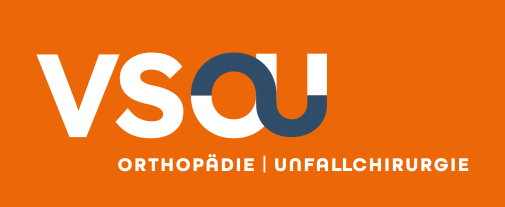Übersichtsarbeiten - OUP 07-08/2013
8. Cheng T et al. Minimally invasive total hip arthroplasty: a systematic review. Int Orthop 2009; 33: 1473–1481.
9. Graw BP et al. Minimal incision surgery as a risk factor for early failure of total hip arthroplasty. Clin Orthop Relat Res 2010; 468: 2372–2376.
10. Yang C et al. Minimally-invasive total hip arthroplasty will improve early postoperative outcomes: a prospective, randomized, controlled trial. Ir J Med Sci 2010; 179: 285–290.
11. Mouilhade F et al. Component positioning in primary total hip replacement: a prospective comparative study of two anterolateral approaches, minimally invasive versus gluteus medius hemimyotomy. Orthop Traumatol Surg Res 2011; 97: 14–21.
12. Reininga IH et al. Minimally invasive and computer-navigated total hip arthroplasty: a qualitative and systematic review of the literature. BMC Musculoskelet Disord 2010; 11: 92.
13. Muller M et al. Randomized controlled trial of abductor muscle damage in relation to the surgical approach for primary total hip replacement: minimally invasive anterolateral versus modified direct lateral approach. Arch Orthop Trauma Surg 2011; 131: 179–189.
14. Mazoochian F et al. Minimally invasive total hip arthroplasty: a randomized controlled prospective trial. Arch Orthop Trauma Surg 2009; 129: 1633–1639.
15. Sendtner E et al. Tackling the learning curve: comparison between the anterior, minimally invasive (Micro-hip(R)) and the lateral, transgluteal (Bauer) approach for primary total hip replacement. Arch Orthop Trauma Surg 2011; 131: 597–602.
16. Shon WY et al. Impingement in total hip arthroplasty a study of retrieved acetabular components. J Arthroplasty 2005; 20: 427–435.
17. Lewinnek GE et al. Dislocations after total hip-replacement arthroplasties. J Bone Joint Surg Am 1978; 60: 217–220.
18. Sariali E et al. Three-dimensional hip anatomy in osteoarthritis. Analysis of the femoral offset. J Arthroplasty 2009; 24: 990–997.
19. Murphy SB, Ecker TM. Evaluation of a new leg length measurement algorithm in hip arthroplasty. Clin Orthop Relat Res 2007; 463: 850–859.
20. Parratte S, Argenson JN. Validation and usefulness of a computer-assisted cup-positioning system in total hip arthroplasty. A prospective, randomized, controlled study. J Bone Joint Surg Am 2007; 89: 494–499.
21. Renkawitz T et al. Computer-assisted total hip arthroplasty: coding the next generation of navigation systems for orthopedic surgery. Expert Rev Med Devices 2009; 6: 507–514.
22. Sendtner E et al. Accuracy of acetabular cup placement in computer-assisted, minimally-invasive THR in a lateral decubitus position. Int Orthop 2011; 35: 809–815.
23. Ryan JA, Jamali AA, Bargar WL Accuracy of computer navigation for acetabular component placement in THA. Clin Orthop Relat Res 2010; 468: 169–177.
24. Dorr LD et al. Precision and bias of imageless computer navigation and surgeon estimates for acetabular component position. Clin Orthop Relat Res 2007; 465: 92–99.
25. Fukunishi S et al. Assessment of accuracy of acetabular cup orientation in CT-free navigated total hip arthroplasty. Orthopedics 2008; 31:
26. Jenny JY et al. Navigated non-image-based positioning of the acetabulum during total hip replacement. Int Orthop 2009; 33: 83–87.
27. Kalteis T et al. Imageless navigation for insertion of the acetabular component in total hip arthroplasty: is it as accurate as CT-based navigation? J Bone Joint Surg Br 2006; 88: 163–167.
28. Ybinger T et al. Accuracy of navigation-assisted acetabular component positioning studied by computed tomography measurements: methods and results. J Arthroplasty 2007; 22: 812–817.
29. Hohmann E, Bryant A, Tetsworth K. A comparison between imageless navigated and manual freehand technique acetabular cup placement in total hip arthroplasty. J Arthroplasty 2011; 26: 1078–10782.
30. Wan Z et al. Imaging and navigation measurement of acetabular component position in THA. Clin Orthop Relat Res 2009; 467: 32–42.
31. Renkawitz T et al. Principles and new concepts in computer-navigated total hip arthroplasty. Orthopade 2011; 40: 1095–1102.
32. Renkawitz T et al. Measuring leg length and offset with an imageless navigation system during total hip arthroplasty: is it really accurate? Int J Med Robot 2009; 5: 192–5197.
33. Manzotti A et al. Does computer-assisted surgery benefit leg length restoration in total hip replacement? Navigation versus conventional freehand. Int Orthop 2011; 35: 19–24.
34. Jung HJ et al. Fractures associated with computer-navigated total knee arthroplasty. A report of two cases. J Bone Joint Surg Am 2007; 89: 2280–2284.
35. Renkawitz T et al. Leg length and offset measures with a pinless femoral reference array during THA. Clin Orthop Relat Res 2010; 468: 1862–1868.
36. Renkawitz T et al. Experimental validation of a pinless femoral reference array for computer-assisted hip arthroplasty. J Orthop Res 2010; 28: 583–588.
37. Beringer DC, Patel JJ, Bozic KJ. An overview of economic issues in computer-assisted total joint arthroplasty. Clin Orthop Relat Res 2007; 463: 26–30.
Fussnoten
1 Orthopädische Klinik für die Universität Regensburg, Asklepios Klinikum Bad Abbach
